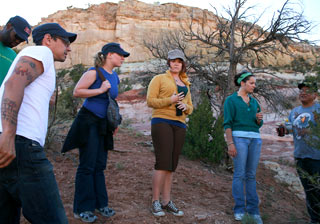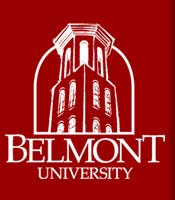Day 7 - Navajo
 Where to begin? I’m am completely overwhelmed by trying to convey in a few short paragraphs what this day meant to me personally, and how I think it affected our group as a whole. We had no idea what to expect from our day that would be spent on a portion of the Navajo Reservation of New Mexico and Arizona. We met up with our guide for the day, Leland Silversmith, at the reservation’s visitor’s center outside Gallup, NM and across the border into Arizona. For those who may not be familiar with the Navajos, I’ll attempt to give a very brief history of the land and people based on previous research that I, as the “ambassador” for this destination, had to undertake and information we were taught while on the reservation.
Where to begin? I’m am completely overwhelmed by trying to convey in a few short paragraphs what this day meant to me personally, and how I think it affected our group as a whole. We had no idea what to expect from our day that would be spent on a portion of the Navajo Reservation of New Mexico and Arizona. We met up with our guide for the day, Leland Silversmith, at the reservation’s visitor’s center outside Gallup, NM and across the border into Arizona. For those who may not be familiar with the Navajos, I’ll attempt to give a very brief history of the land and people based on previous research that I, as the “ambassador” for this destination, had to undertake and information we were taught while on the reservation.
 “Navajoland” encompasses an area of approximately 27,000 square miles in Utah, New Mexico and Arizona. The area lies within what the Navajo people consider to be four sacred mountains, called the “Four Corners.” The Navajos are the largest Native American tribe with a population of about 320,000, of which about 200,000 live on the actual reservation. The Navajo government is the most sophisticated American Indian government, with the same three branches as the U.S. government. The tribal government was formed in the 1920’s to facilitate the sale of rights for American companies to excavate natural resources like coal, minerals, uranium and natural gas. These resources provide money for tribal land funds, as well as jobs for the Navajo people. However, we heard while on the reservation that they were continually short-changed for the price of their coal, and had they been paid full market price for it, they may have become one of the wealthiest peoples in America. The main trade for this tribe today on the reservation is shepherding and raising cattle.
“Navajoland” encompasses an area of approximately 27,000 square miles in Utah, New Mexico and Arizona. The area lies within what the Navajo people consider to be four sacred mountains, called the “Four Corners.” The Navajos are the largest Native American tribe with a population of about 320,000, of which about 200,000 live on the actual reservation. The Navajo government is the most sophisticated American Indian government, with the same three branches as the U.S. government. The tribal government was formed in the 1920’s to facilitate the sale of rights for American companies to excavate natural resources like coal, minerals, uranium and natural gas. These resources provide money for tribal land funds, as well as jobs for the Navajo people. However, we heard while on the reservation that they were continually short-changed for the price of their coal, and had they been paid full market price for it, they may have become one of the wealthiest peoples in America. The main trade for this tribe today on the reservation is shepherding and raising cattle.
Continue reading "Day 7 - Navajo" »
